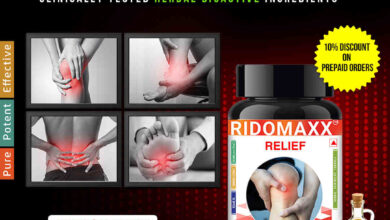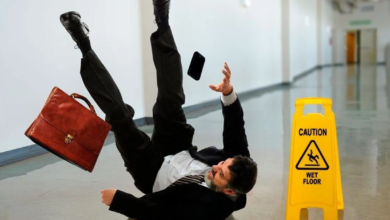Physical Therapy for Back Pain: A Comprehensive Guide
Back pain is one of the most common health issues that people face today, affecting individuals of all ages and lifestyles. From sitting at a desk for long hours to engaging in strenuous physical activities, various factors can lead to back pain. Fortunately, physical therapy for back pain offers a highly effective and non-invasive solution that not only alleviates pain but also promotes long-term healing and prevention. This comprehensive guide will explore how physical therapy can help manage back pain, the techniques used, and why it is considered one of the best approaches to achieve lasting relief.
Understanding Back Pain: Causes and Symptoms
Before diving into how physical therapy works, it’s important to understand the root causes of back pain and the common symptoms associated with it. Back pain can originate from various sources, including muscle strain, spinal issues, poor posture, or underlying medical conditions.
Common Causes of Back Pain:
- Muscle Strain or Sprain: Overstretching or tearing of muscles or ligaments in the back due to heavy lifting, sudden movements, or poor posture can cause significant pain.
- Herniated Disc: When a disc in the spine bulges or ruptures, it can press on nerves, leading to pain, numbness, or tingling in the back and other areas.
- Sciatica: Sciatica occurs when the sciatic nerve, which runs from the lower back down the legs, is compressed, causing sharp or burning pain.
- Spinal Stenosis: Narrowing of the spinal canal puts pressure on the nerves, resulting in back pain, often accompanied by leg pain.
- Arthritis: Osteoarthritis and other types of arthritis can cause inflammation in the spine, contributing to chronic back pain.
Common Symptoms of Back Pain:
- Persistent aching or stiffness in the back
- Sharp or shooting pain, especially when moving or bending
- Pain radiating down the legs (sciatica)
- Reduced range of motion and flexibility
- Muscle spasms or tightness in the lower back
How Physical Therapy Helps Alleviate Back Pain
Physical therapy for back pain focuses on reducing pain, improving mobility, and strengthening the muscles that support the spine. Unlike medications that only mask the pain, physical therapy addresses the underlying issues, providing a long-term solution. Here are the key ways physical therapy helps manage and treat back pain:
- Pain Relief Through Targeted Exercises
One of the primary goals of physical therapy is to reduce pain through targeted exercises that improve strength, flexibility, and range of motion. Physical therapists design personalized exercise programs based on the specific cause and location of your back pain. Common exercises include stretches to release tight muscles, core strengthening to support the spine, and low-impact aerobic exercises to enhance overall fitness.
- Improving Posture and Body Mechanics
Poor posture is a major contributor to back pain, especially for those who sit for prolonged periods. Physical therapists teach proper posture and body mechanics, including how to sit, stand, and move correctly to reduce strain on the back. This education helps prevent future episodes of pain by promoting healthier habits.
- Manual Therapy for Spinal Alignment and Muscle Tension
Manual therapy, including hands-on techniques like spinal manipulation, soft tissue massage, and joint mobilization, is often used in physical therapy for back pain. These techniques help to realign the spine, reduce muscle tension, and improve circulation, providing immediate pain relief and enhancing the body’s natural healing process.
- Strengthening Core Muscles
A strong core is essential for supporting the spine and preventing back pain. Physical therapists focus on strengthening the core muscles, including the abdominal and back muscles, to provide better stability and reduce the risk of injury. Core-strengthening exercises such as planks, bridges, and pelvic tilts are commonly included in physical therapy programs.
- Enhancing Flexibility and Mobility
Restricted flexibility and mobility can exacerbate back pain. Physical therapy incorporates stretching exercises that target tight muscles and improve flexibility, making daily movements easier and less painful. Techniques such as static stretching, dynamic stretching, and yoga-inspired movements are often used to enhance mobility.
- Education on Ergonomics
Physical therapists educate patients on proper ergonomics, particularly for those with desk jobs or physically demanding work. They provide guidance on setting up a workspace that minimizes back strain, including the correct positioning of chairs, desks, and computer screens. This ergonomic advice is crucial in preventing recurrent back pain caused by poor posture or repetitive movements.
- Developing a Personalized Home Exercise Program
Physical therapy doesn’t end when the session is over; it’s a continuous process. Therapists often provide personalized home exercise programs that allow patients to continue their progress outside the clinic. These exercises help maintain the benefits of therapy, strengthen muscles, and prevent the recurrence of pain.
Types of Physical Therapy Techniques for Back Pain
Physical therapy for back pain utilizes a variety of techniques tailored to the individual’s needs. Here are some of the most common methods:
- Therapeutic Exercises
These are specific exercises designed to improve strength, flexibility, and endurance. Therapeutic exercises for back pain include core strengthening, pelvic tilts, bridges, and gentle yoga poses that target back muscles.
- Manual Therapy
Manual therapy involves hands-on techniques performed by the therapist to manipulate the muscles, joints, and soft tissues. This can include spinal mobilization, massage, and myofascial release, all of which help to alleviate pain and improve movement.
- Dry Needling
Dry needling is a technique that uses thin needles to target trigger points in the muscles. It helps release tension, improve blood flow, and reduce pain, making it an effective addition to physical therapy for back pain.
- Heat and Cold Therapy
Heat therapy helps relax tight muscles, while cold therapy reduces inflammation and numb pain. These therapies are often used in conjunction with exercises and manual techniques to enhance overall pain relief.
- Ultrasound Therapy
Ultrasound therapy uses sound waves to deliver deep heat to muscles and tissues, promoting healing and reducing pain. It is particularly beneficial for treating muscle spasms and tightness associated with back pain.
- Electrical Stimulation
Electrical stimulation, such as TENS (Transcutaneous Electrical Nerve Stimulation), involves using electrical currents to reduce pain and promote muscle relaxation. This non-invasive therapy is often used to provide immediate relief during physical therapy sessions.
Benefits of Physical Therapy for Back Pain
Physical therapy offers numerous benefits that extend beyond pain relief. Here’s why it is considered one of the most effective treatments for back pain:
- Non-Invasive Treatment: Physical therapy provides a non-surgical approach to managing back pain, making it an ideal first line of treatment.
- Customized to Individual Needs: Each physical therapy program is tailored to the patient’s specific condition, ensuring targeted and effective treatment.
- Reduces the Need for Pain Medication: By addressing the root cause of pain, physical therapy reduces the reliance on pain medications, which can have side effects and lead to dependency.
- Improves Overall Functionality: Physical therapy not only relieves pain but also enhances overall functionality, allowing patients to return to their daily activities with greater ease and comfort.
- Prevents Future Injuries: Through education on proper posture, body mechanics, and strengthening exercises, physical therapy helps prevent future back injuries and chronic pain.
When to See a Physical Therapist for Back Pain
If you are experiencing persistent back pain that interferes with your daily life, it may be time to consider physical therapy. Physical therapy is particularly beneficial if:
- You have chronic back pain that lasts more than a few weeks.
- You experience back pain that radiates to other areas, such as the legs or hips.
- Your back pain limits your mobility and range of motion.
- You want to avoid surgery or reduce dependency on pain medications.
- You need guidance on improving posture, body mechanics, or ergonomic setup.
Conclusion
Physical therapy for back pain is a comprehensive and effective approach that not only relieves pain but also promotes long-term healing and prevention. By focusing on targeted exercises, manual therapy, and patient education, physical therapy addresses the root causes of back pain, providing a sustainable solution for those seeking lasting relief. If you’re struggling with back pain, consider consulting with a licensed physical therapist who can create a personalized treatment plan tailored to your needs. With the right guidance and commitment to therapy, you can achieve a pain-free, active lifestyle and reclaim your quality of life.



